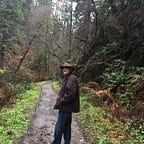On Healing a Nation — Again
The following article is inspired by the Ken Burns documentary “The Vietnam War”
A little piece of hell
Con Thien
In 1967, John Musgrave was an 18-year-old Marine serving in Con Thien, an outpost just south of the demilitarized zone between North and South Vietnam. “Con Thien” translates to “hill of angles,” but in 1967 It was, as the Marines called it, a “little piece of hell.”
Little more than a barren patch of red mud on a hill, it quickly became a meat grinder, emblematic of the futility, brutality, and failed leadership of the war.
Intended to block North Vietnamese incursions across the DMZ, the Marines, dug in atop the treeless hill, were a “sitting target.” Artillery shells rained down on Con Thien 24 hours a day. The forsaken outpost served death to 1,419 American soldiers in the two years the Marines held Con Thien. Another 9,265 were wounded. The North Vietnamese lost 7,500 men and an “untold” number were wounded.
Musgrave survived, coming home an emotionally scarred young man to an unwelcoming country divided and bitter over a war reeling out of control.
Walking wounded: “This will save lives”
The ghosts of war haunted Musgrave. Suicidal and drinking heavily, one night he determined to finally end the searing pain. But for the sound of his dogs scratching at the door, he would have done it. Instead of blowing a bullet through his skull, he let his dogs in.
As dogs often do, it brought Musgrave back to his present moment. Dying is too easy. The challenge is in living. But Musgrave still carried within him the burden of his horrific experience of war. Of the bloodshed, the killing, the shattered bodies and shattered lives. And the pointlessness of it all.
Years later, as he came upon the newly built Vietnam Memorial in Washington, D.C., it all welled up from deep within. The horror of war burst through. Musgrave collapsed, sopping.
Looking up at the memorial, at the names 58,220 of his fallen comrades, he thought “this will save lives.”
Reflecting on the lessons of history
I first walked the length of the memorial in January of 2009, two days before the inauguration of Barack Obama as the 44th president of the United States. Many others joined me that day. Some, like me, walked soberly past the names, the many thousands of names. Each one representing a life cut short. Potential unrealized. A dream never realized.
Others stood, touching a name etched into the wall, making contact, through the years of suffering and pain, with a lost friend, a fallen soldier.
Remembering.
Honoring the sacrifice that, at the time, the leaders prosecuting the appalling war were all too quick to “put behind us.”
Too willing to forget, too quick ignore the lessons of history.
E Pluribus Unum
For those few days in January 2009, it felt like a nation living its creed. E Pluribus Unum: “out of many, one”
Millions of Americans descended on the nation’s capital. Not to express anger, protest or unrest, but celebration. As news that Saturday morning of the “Miracle on the Hudson” beamed across television news, it did indeed feel like a magical moment. A great coming together, a nation healing its wounds.
As I wrote at the time:
People are coming from everywhere, the town is bracing for those few moments in its history where not only is Washington truly becomes the focal point of a nation — it is the center of its soul. Where it represents the idea, the promise, and the hope of a nation. A great movement and gathering of people, converging to one place, at one time, for one historic event.
Healing a nation, healing ourselves
We all went home, back to our lives. Hope and promise disappeared into the mists of memory, like the mythical village of Brigadoon. There for a time, as real as anything, then gone, left in its place a forlorn memory of what might have been.
“What might have been” yields to “what can still be.”
It took many years for John Musgrave to finally heal. To disgorge the pent-up pain and sorrow ingested into his psyche from the savagery of war. Of being forced himself to become savage in order to survive.
Musgrave’s story is particularly poignant.
If a young 18-year-old can go through what he did and eventually heal, don’t we owe to him, as a country, to do the same?
Featured image credit: Sandia Labs, Flickr
